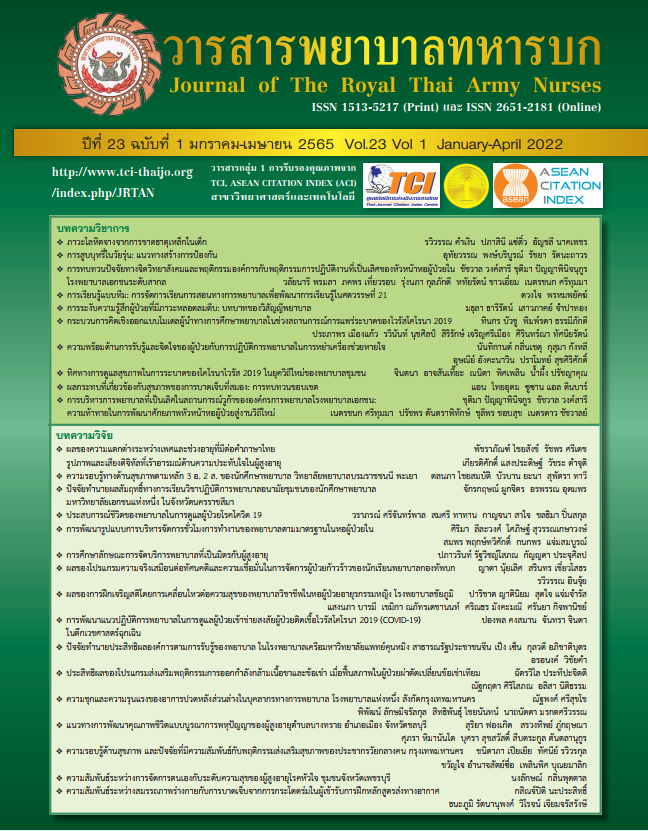Anesthesia for Patients with Tracheobronchial Stenosis: Role of Nurse Anesthetist
Keywords:
Tracheobronchial stenosis, Anesthesia, Procedural careAbstract
Tracheobronchial stenosis is a common cause of upper airway obstruction. Airway stenosis can be due to a large variety of benign and malignant causes. Airway stent can provide structural airway support without painful surgery and immediate symptomatic relief of life threatening dyspnea. Anesthetic management of the stenting procedures can be challenging because the obstructed airway must be shared between the anesthesiologist and an endoscopist. The nursing care requires a specific expertise, nurse anesthetist, to provide the proper quality patient care and reduce the risk of developing various complications. The role of the nurse anesthetist starting with visiting and optimizing the patient before anesthesia, preparing the room and equipment that will be used intraoperatively and participating with anesthesiologist during the procedure, including observe and aware of postoperative complications in the recovery room.
Downloads
References
Puchalski J, Musani AI. Tracheobronchial stenosis: causes and advances in management. Clin Chest Med. 2013;34(3):557-67.
Eiamsaard S, Disayabutr S, Tschekuna J. Post-tuberculous Tracheobronchial Stenosis: Case Report. Thai Journal Tuberculosis Chest Diseases Critical Care. 2019;38(1):34-8. (in Thai)
Mudambi L, Miller R, Eapen GA. Malignant central airway obstruction. J Thorac Dis. 2017;9(Suppl 10):S1087-110.
Sabath BF, Ost DE. Update on airway stents. Curr Opin Pulm Med. 2018;24(4):343-49.
Guibert N, Saka H, Dutau H. Airway stenting: Technological advancements and its role in interventional pulmonology. Respirology. 2020;25(9):953-62.
Galway U, Zura A, Khanna S, et al. Anesthetic considerations for bronchoscopic procedures: a narrative review based on the Cleveland Clinic experience. J Thorac Dis. 2019;11(7): 3156-70.
Boonmark N. Nursing care of superior vena cava syndrome: case study. Siriraj Med Bull. 2019;12(2):95-100. (in Thai)
Wirasorn K. Common Oncological Emergencies. Srinagarind Med J. 2015;30(2):200-11. (in Thai)
Morshed K, Trojanowska A, Szymański M, et al. Evaluation of tracheal stenosis: comparison between computed tomography virtual tracheobronchoscopy with multiplanar reformatting, flexible tracheofiberoscopy and intra-operative findings. Eur Arch Otorhinolaryngol. 2011;268(4):591-7.
Murgu SD, Egressy K, Laxmanan B, et al. Central airway obstruction: benign strictures, tracheobronchomalacia, and malignancyrelated obstruction. Chest. 2016;150(2):426-41.
Asano F, Aoe M, Ohsaki Y, et al. Bronchoscopic practice in Japan: a survey by the Japan Society for Respiratory Endoscopy in 2010. Respirology. 2013;18(2):284-90.
Veerahpong N. Safe Care for The Elderly With Complications After Spinal Surgery. Journal of The Royal Thai Army Nurses. 2019;20(3): 62-71. (in Thai)
Saardwai P, Wivatvanit S. The Development of Nurse Anesthetists’ Competency Assessment Scale, Phramongkutklao Hospital. Journal of The Royal Thai Army Nurses. 2019;20(2): 123-30. (in Thai)
McGrath EE, Warriner D, Anderson P. The insertion of self expanding metal stents with flexible bronchoscopy under sedation for malignant tracheobronchial stenosis: a single-center retrospective analysis. Arch Bronconeumol. 2012;48(2):43-8.
Li JJ, Li N, Ma WJ, et al. Safety application of muscle relaxants and the traditional lowfrequency ventilation during the flexible or rigid bronchoscopy in patients with central airway obstruction: a retrospective observational study. BMC Anesthesiol. 2021; 21(1):106.
Pertzov B, Gershman E, Izhakian S, et al. Placement of self-expanding metallic tracheobronchial Y stent with laryngeal mask airway using conscious sedation under fluoroscopic guidance. Thorac Cancer. 2021;12(4):484-90.
Yu Z, Wang J, Liang XH, et al. Placing covered self-expanding metal stents by suspension laryngoscope in benign tracheal stenosis. Am J Otolaryngol. 2021;42(5):103040.
Khan A, Hashim Z, Gupta M, et al. Rigid bronchoscopic interventions for central airway obstruction - An observational study. Lung India. 2020;37(2):114-9.
Bhardwaj H, Awab A, Youness HA, et al. Stenting of critical tracheal stenosis with adjuvant cardio-pulmonary bypass. Lung India. 2017; 34(1):79-81.
Murgu S, Laxmanan B, Stoy S, et al. Evaluation of safety and short-term outcomes of therapeutic rigid bronchoscopy using total intravenous anesthesia and spontaneous assisted ventilation. Respiration. 2020;99(3): 239-47.
Putz L, Mayné A, Dincq AS. Jet ventilation during rigid bronchoscopy in adults: A focused review. Biomed Res Int. 2016;2016:4234861.
Downloads
Published
How to Cite
Issue
Section
License
Copyright (c) 2022 Journal of The Royal Thai Army Nurses

This work is licensed under a Creative Commons Attribution-NonCommercial-NoDerivatives 4.0 International License.
บทความหรือข้อคิดเห็นใดใดที่ปรากฏในวารสารพยาบาลทหารบกเป็นวรรณกรรมของผู้เขียน ซึ่งบรรณาธิการหรือสมาคมพยาบาลทหารบก ไม่จำเป็นต้องเห็นด้วย
บทความที่ได้รับการตีพิมพ์เป็นลิขสิทธิ์ของวารสารพยาบาลทหารบก
The ideas and opinions expressed in the Journal of The Royal Thai Army Nurses are those of the authors and not necessarily those
of the editor or Royal Thai Army Nurses Association.






